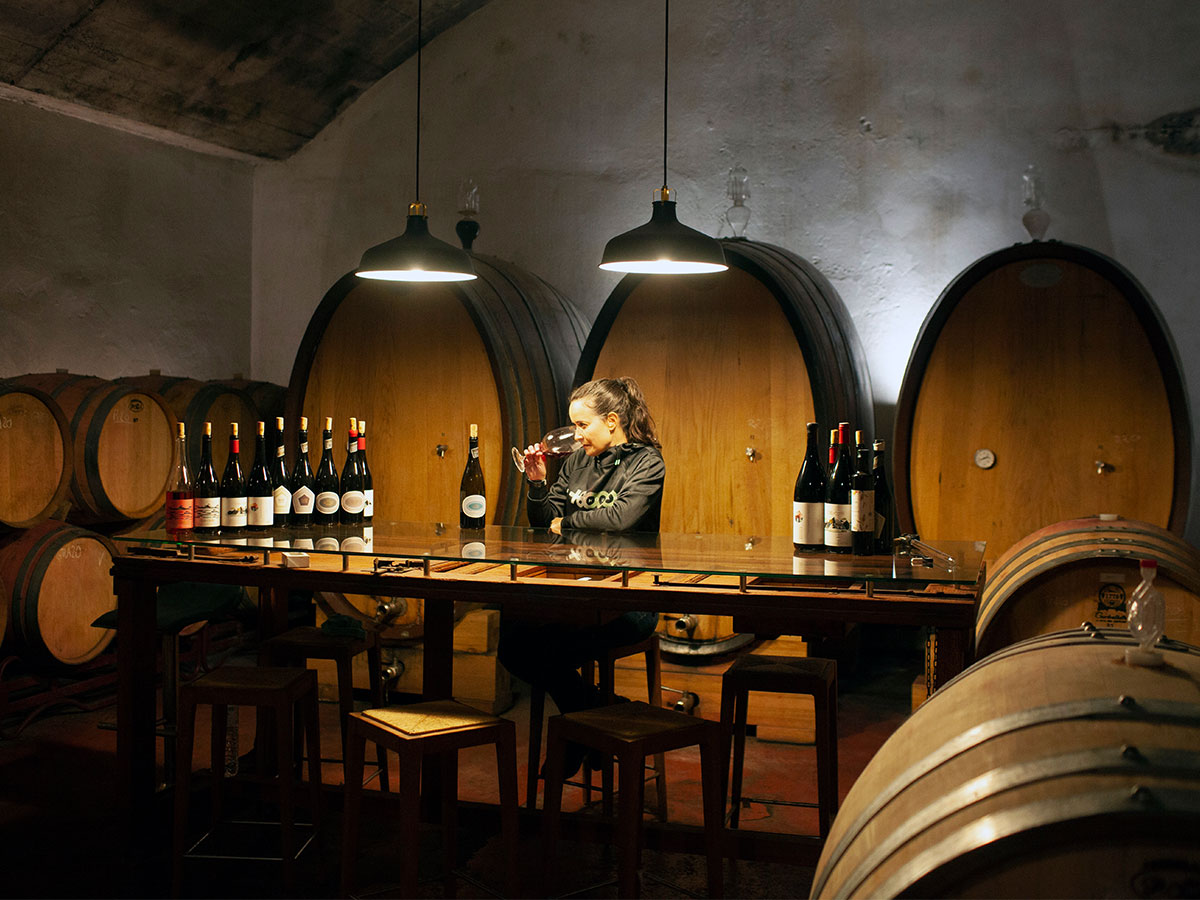Sandra Bravo fell in love with garnacha—especially the garnacha growing in abandoned parcels high in the mountains of her homeland, Rioja. And I fell in love with her wine when I tasted it on a panel last year. It was different from the friendly reds that are often made from the grape but labeled simply as Rioja. The wine turned out to be La Dula 2018 Garnacha de Altura from her Bodega Sierra de Toloño, a garnacha with immediate peppery energy that grew sunnier with each passing day.
As much as I love great traditional Rioja—earth-bound tempranillo, needing years of rest in a dark cellar to get fully charged—this was different. The best tempranillos bring summer out of the cellar. Their tannins taste like fresh-cut herbs; their fruit has the tang of cherry tomatoes in August and the sweet memory of blackberries. More than most wines, great Rioja—read tempranillo—feels to me like a time capsule, a summer moment come back to life.
Bravo’s La Dula was no wistful memory, but a sunny force all its own. It drove me to look for more garnachas from Rioja’s northern and western hills, the cool, Atlantic side of Rioja where most of the great tempranillos grow. Nacho Monclús, who runs Despaña in NYC’s SoHo, agreed to help, connecting me to a researcher with boots on the ground to look for more. And then he asked, “What if I go and do it?” He arrived in Rioja on a sunny autumn day, and time began to slow—the way a traditional Rioja mysteriously bends time and seems to redirect its energy. Garnacha does that as well, but in a fresh and sunny direction.
High-altitude garnacha may be one of the fruits of a changing climate—just in time, in fact, before all of the old parcels have disappeared.
Ravera, in Barolo, is also getting its moment in the sun, after long years of challenges from the cold of the Alps: It is now the cool place to be. Stephanie Johnson braved pandemic travel to visit what once was a quiet corner of Barolo, reporting on a new community of growers investing in vineyards and making exceptional wines.
Closer to home, as this issue went to press, an atmospheric river converged with a bomb cyclone to dump rain on California’s vinelands and snow in the Sierras. It’s a momentary break in the drought and fast containment for this year’s wildfires, rearranging the land those fires have scarred—more of the extreme weather that continues to change the game for winegrowers.
Luke Sykora, who commutes to Palo Alto for his day job, took some time in the Silicon Valley hills to check in on cabernet. During his time as executive editor at Wine & Spirits, the Santa Cruz Mountains had become one of his favorite locales for its long-lived, site-expressive blends from high-altitude ridges—like Monte Bello and Mount Eden. He revisited some of those sites this fall for an update on how the wines and the vines are faring under fast-changing conditions.
Whether you find yourself at the solstice with family and friends, sharing a bottle of Santa Cruz Mountains cabernet, Barolo Ravera or a sunny Rioja garnacha, we hope the holidays bring you safety, health and joy.


Joshua Greene is the editor and publisher of Wine & Spirits magazine.
This story appears in the print issue of December 2021.
Like what you read? Subscribe today.

















